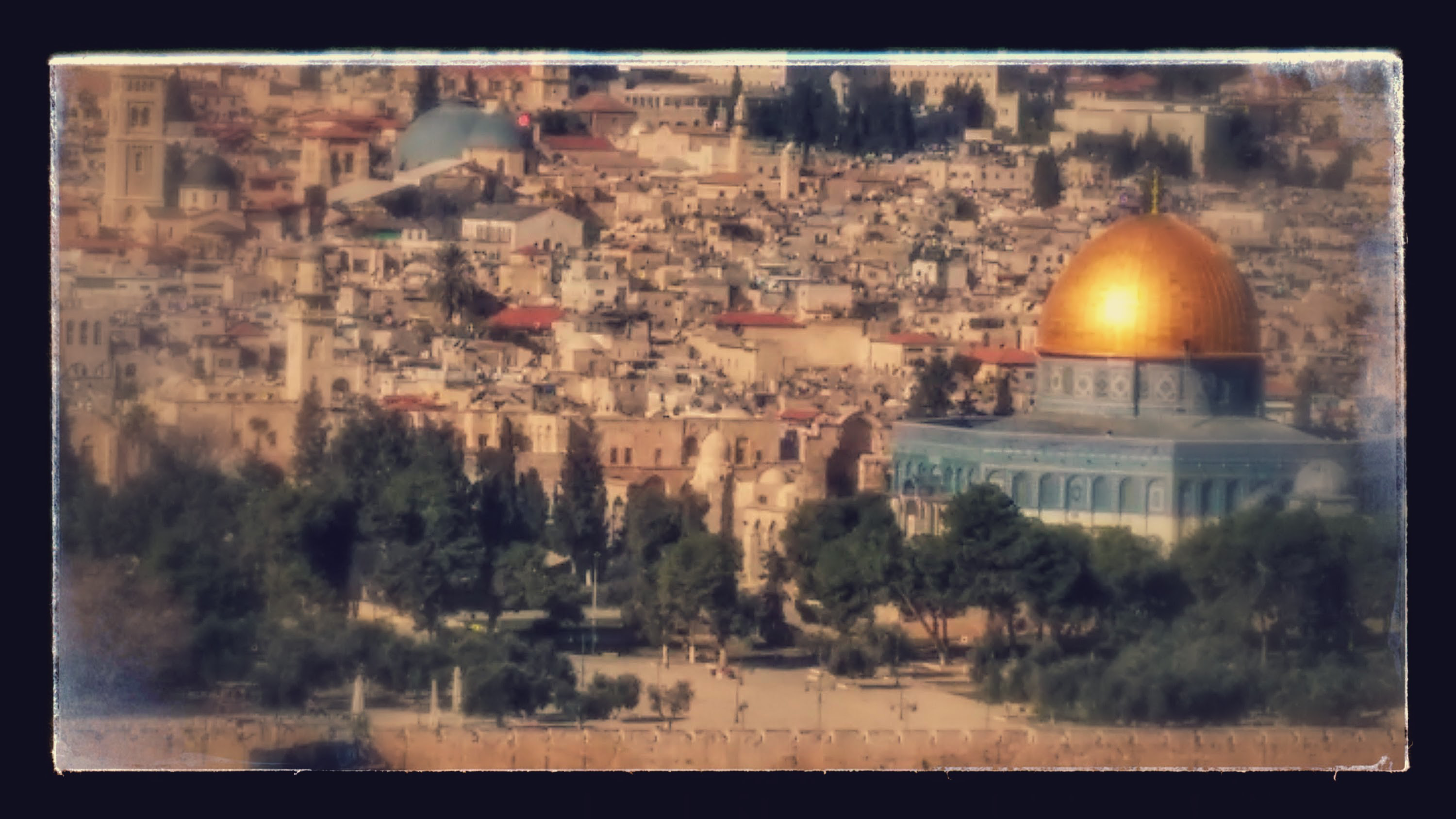Roman Vishniac retrospective at San Francisco's Contemporary Jewish Museum includes never-before-seen footage of 1939 Poland
Through his photos, Vishniac hoped to sway FDR to intervene and help prevent the annihilation of European Jewry
Exhibit shows new works by iconic photographer who immortalized pre-WWII Jewry
Roman Vishniac retrospective at San Francisco’s Contemporary Jewish Museum includes never-before-seen footage of 1939 Poland
By Lisa Klug March 27, 2016, 4:14 am
When Roman Vishniac began documenting impoverished Jewish communities with his camera in 1935, he unwittingly sealed his photographic legacy by capturing a rare glimpse into a world that was soon to disappear. On the eve of World War II, while on assignment for the Jewish Joint Distribution Committee (JDC), Vishniac created what would become the most widely recognized and reproduced photographic record of European Jewry. In the many decades since they were first distributed, his iconic black-and-white images continue to capture the public’s interest with their portrayal of a vanished world. And yet, little of Vishniac’s other work was published — or even printed — during his own lifetime. A new retrospective at the Contemporary Jewish Museum in San Francisco, “Roman Vishniac Rediscovered,” not only reveals how Vishniac influenced contemporary impressions of Jewish life in Eastern Europe, but also uncovers the full depth of his work, which includes European modernism, photographs of New York City in the 1940s and pioneering color photomicroscopy — scientific photography through the lens of a microscope.
Roman Vishniac took scientific photographs using a microscope, such as this cross-section of a pine needle (Courtesy International Center of Photography) Roman Vishniac took scientific photographs using a microscope, such as this cross-section of a pine needle (Courtesy International Center of Photography) In addition to images from his celebrated book, “A Vanished World,” the show offers nearly 400 items of film footage, family portraits, personal correspondence and images of the photographer himself. Prints from recently digitized negatives document Vishniac’s creative output in black-and-white, with the exception of three recently discovered color transparencies. “The exhibition presents, for the first time, five decades of work by a legendary photographer who was previously known for photographs spanning only four years,” says Maya Benton, exhibition curator for the International Center of Photography in New York, which premiered the exhibit. “The vast holdings of the Roman Vishniac Archive, which includes 10,000 negatives and more than 50,000 objects, have allowed us to reposition Vishniac as one of the great photographers of the twentieth century.” The exhibit reveals what organizers describe as a “compositional acuity, inventiveness and surprising stylistic range.” This watershed moment solidifies Vishniac’s place among the 20th century’s most accomplished photographers, they say. It also repositions his iconic images of Eastern European Jewry within a broader tradition of social documentary. ‘His powerful photographs are iconic images of our shared history’ “Vishniac’s 1983 monograph ‘A Vanished World’ is on the bookshelf of every Jewish family I know, including my own,’” says Lori Starr, executive director of the Contemporary Jewish Museum. “His powerful photographs are iconic images of our shared history. With this exhibition, we now have the opportunity to see these widely familiar works in the context of Vishniac’s entire oeuvre and to understand him as a major modernist photographer and profoundly important artist.” Many elements of Vishniac’s work have never been available for public viewing until now, such as 90 vintage images from 1938 of impoverished Jewish children at Joint Distribution Committee summer camps in Poland. As the exhibit explains, “The maquette sat in the JDC archives for more than 70 years. It was digitized this year, and is being displayed here for the first time.” Other pieces are uniquely personal. Prints of Vishniac’s parents depict his daughter Mara and son Wolf, as well as relatives from Russia. Memorabilia includes a postcard from Vishniac to Mara describing the interior an old synagogue and disturbing scenes in Europe. “I am in a very small town and it is quiet here,” Vishniac wrote. “I arrived very early and already went to the synagogue at 7:30 a.m. Strangely enough it is beautifully painted inside with views of holy places. I took pictures of a 300-year-old lamp and a 200-year-old chair.” ‘I just came back from an area where a lot of Jews had it really bad’ With the perspective of time, Vishniac’s impassioned notes to his daughter appear critical toward preserving his legacy. In 1938, Vishniac wrote to Mara, then living in Riga, of the tragedies unfolding near Warsaw: “I just came back from an area where a lot of Jews had it really bad… There are many unhappy Jews, and among them even girls your age,” he wrote. Mara Vishniac Kohn, wife of physicist and Nobel Laureate Walter Kohn, is still acting on her father’s imperative. In 2007, her generosity founded the Vishniac Archive at the International Center of Photography. Her support continues with the “Roman Vishniac Rediscovered” exhibition. On display at the Contemporary Jewish Museum is Mara’s 1937 membership card to the Werkleute Bund Judischer Jungend (Working League of Jewish Youth) while a print contact sheet from original negatives reveals scenes from Bratislava, Warsaw, Mukacevo and the Carpathian Mountains.
Roman Vishniac holding his Rolleiflex camera, ca. 1935–38 (Courtesy International Center of Photography) Roman Vishniac in the 1930s (Courtesy International Center of Photography) Another print that shows Vishniac with his Leica camera in Mukacevo was snapped by Henryk Schwartz, a cantor and traveling salesman who befriended Vishniac and helped him gain access to nearby villages by introducing him to the town’s religious leaders. And then, there are numerous iconic images of a ravaged European Jewry: a Warsaw scene reveals a Jewish market; in another, a villager in the Carpathians, and many others. There are also missives Vishniac penned from an internment camp in France dated in 1939, as well as excerpts of a scrapbook containing an announcement in Yiddish and English for the YIVO exhibition of his photographs of Jewish pre-war life in Poland at the Yiddish Scientific Institute in 1944. Vishniac’s personal trajectory emerges throughout the exhibit. Born in Moscow to an affluent Russian Jewish family in 1897, Vishniac studied biology and zoology, experimenting with camera lenses and magnification. In 1920, he relocated to Berlin with his Latvian Jewish wife, Luta Bagg, in the aftermath of the Bolshevik Revolution. As an amateur photographer, he witnessed the sweeping artistic innovation of the Weimar era. His own experimentation with framing and composition reflects the influence of European modernism. In Berlin, Vishniac joined several camera clubs and while living in a neighborhood amidst many Russian Jewish emigres, he installed a photo-processing lab in his apartment. The ominous signs of the Nazi Party’s rise to power in Germany became a focal point of his photography. He captured images of campaign posters, swastika banners and marching soldiers — even his then-seven-year-old daughter, Mara, posing in front of a poster depicting how to measure the cranial features to prove one’s race. As Nazi restrictions on Jews ensued, the JDC hired Vishniac to document the hardships facing European Jewry to support its fundraising efforts. In 1939, he was commissioned to make a promotional film at a Society for Trades and Agricultural Labor (ORT) vocational training facility near Marseille. It was never completed and only outtakes survived. The museum exhibition is screening this recently discovered material for the first time. Other surprising disclosures reveal Vishniac’s own escape and his personal appeals on behalf of the doomed. In late 1939, while his wife and children were safe in Stockholm, Vishniac was held for a month at the Camp du Ruchard internment camp in France. After his family paid for his release, Vishniac reunited with them in Lisbon, and they all sailed to New York, where he set up a portrait studio on the Upper West Side. The exhibit includes a letter from Vishniac’s sister-in-law, who, among other relatives, had written the US State Department to obtain visas for their arrival. The family reached New York City on December 31, 1940. The exhibit displays a 1942 letter Vishniac sent to FDR with five photographs of Eastern European Jews that illustrate the ‘infinite disaster and injustice’ wrought by Nazism The exhibit also displays a 1942 letter Vishniac sent to President Franklin D. Roosevelt on the occasion of FDR’s 60th birthday. Vishniac included a gift: five photographs of Eastern European Jews designed to illustrate the “infinite disaster and injustice” wrought by Nazism. Even though he had not yet mastered the language of his adopted country, Vishniac hoped to sway Roosevelt to intervene and help prevent the annihilation of European Jewry. As World War II raged in Europe, Vishniac staged two large exhibitions at the YIVO Institute for Jewish Research in New York, presenting his commissioned work from Eastern Europe to an American audience. He also began documenting immigrant life in America during and after the war, photographing the arrival of Jewish refugees and Holocaust survivors, as well as Jewish notables, including Albert Einstein, Yiddish stage and screen actress, Molly Picon, artist Marc Chagall and comedian Imogene Coca. In 1947, Vishniac returned to Europe to document relief efforts in Jewish Displaced Persons camps and the ruins of his adopted home of Berlin. Many of these images from this period are on display at the exhibition. The “Roman Vishniac Rediscovered” exhibition at the Contemporary Jewish Museum in San Francisco, California runs through May 29. | 




















